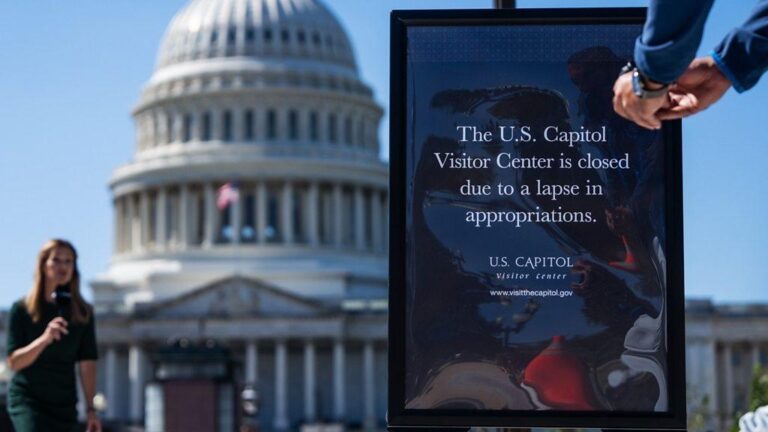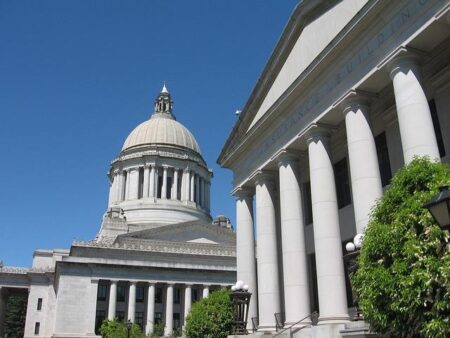Government shutdowns have become a recurring source of disruption and uncertainty in the United States, locking federal employees out of their jobs and halting non-essential government operations. While other developed nations face political standoffs and budget impasses, the US stands out for its frequent and protracted shutdowns. This article explores why government shutdowns appear to be an almost uniquely American phenomenon, examining the structural, political, and constitutional factors that contribute to these periodic crises.
Government Shutdowns in the US A Unique Political Phenomenon
Unlike many other democracies where budget disputes lead to delays but rarely halt government operations, the United States faces a distinct mechanism that brings federal functions to a screeching halt. This phenomenon is rooted in the US constitutional framework, particularly its separation of powers, which empowers Congress to control government spending. When lawmakers fail to agree on budget appropriations, the absence of a funding bill triggers a shutdown, forcing many federal services to pause and furloughing thousands of employees. This heightened conflict over budget control reflects not only political strategy but also deep partisan divides that have become more pronounced over recent decades.
Several factors contribute to the unique prevalence of shutdowns in the US:
- Fragmented government structure: Multiple branches with distinct powers often lead to stalemates.
- Annual budget process: Unlike countries with multi-year budgets, the US requires yearly approval, increasing the chance of impasse.
- Political brinkmanship: With an emphasis on negotiation leverage, parties may intentionally use shutdowns as pressure tactics.
- Lack of automatic funding mechanisms: When negotiations fail, there is no fallback system to sustain government operations temporarily.
| Country | Shutdown Frequency | Budget Process Style |
|---|---|---|
| United States | High (Every few years) | Annual, Congressional approval |
| United Kingdom | Low (Rare) | Multi-year budgeting with executive control |
| Germany | Very low (Almost none) | Multi-year budget, consensus-driven parliament |
The Role of Partisan Polarization in American Budget Deadlocks
Partisan polarization has entrenched divisions within the US government, creating a volatile environment for budget negotiations. Unlike many other democracies where bipartisan cooperation is common, American politics is marked by deep ideological rifts between the two major parties. These divisions often translate into budget standstills, as each side leverages funding approvals as a political tool rather than a mere procedural necessity. This dynamic fuels repeated government shutdowns when compromise proves elusive, reflecting less on fiscal policy disagreements and more on broader struggles for political control and messaging.
Key factors contributing to this deadlock include:
- Increasingly rigid party platforms that limit room for negotiation.
- Primary elections favoring extreme candidates, intensifying confrontational politics.
- Strategic brinkmanship tactics where shutdown threats are used to gain concessions.
| Year | Shutdown Duration | Main Cause | Partisan Context |
|---|---|---|---|
| 2013 | 16 days | Obamacare funding dispute | Republican opposition to Affordable Care Act |
| 2018-19 | 35 days | Border wall funding | Democrat vs Republican standoff under Trump |
| 1995-96 | 21 days total | Budget negotiation collapse | Clinton vs Republican Congress |
Comparing Government Funding Mechanisms Around the World
Unlike the United States, where budget approval often drags into political brinkmanship leading to shutdowns, many countries employ more streamlined or institutionalized approaches to government funding. In parliamentary systems like the United Kingdom or Canada, the executive branch generally holds the power to pass budgets with relative ease, preventing funding lapses that might halt government operations. These nations typically use continuous appropriations or automatic extensions to avoid funding gaps, reflecting a political culture that prioritizes fiscal stability over partisan standoffs.
Funding mechanisms often incorporate features that safeguard against budget deadlock:
- Multi-year budgets: Allow governments to plan spending over several years, reducing annual conflicts.
- Direct executive authority: Enables the government to reallocate funds temporarily during impasses.
- Constitutional or legislative mandates: Some countries have laws requiring funding continuity to maintain essential services.
| Country | Funding Model | Shutdown Risk |
|---|---|---|
| United States | Annual budget with separate appropriations bills | High |
| United Kingdom | Parliamentary approval with continuous funding clauses | Low |
| Germany | Multi-year budgets with executive control | Minimal |
| Japan | Fiscal year performance-oriented budgeting | Low |
Strategies to Prevent Future Shutdowns Lessons from International Practices
Many countries have adopted robust budgeting mechanisms to sidestep the paralysis seen in U.S. government shutdowns. These include automatic continuing resolutions, which ensure government funding continues temporarily at previous levels until a new budget is approved, minimizing the risk of service interruption. For instance, Canada’s prorogation strategy pauses parliamentary business without shutting down government functions, maintaining continuity even amid political deadlocks. Similarly, Germany’s emphasis on coalition negotiations prior to fiscal planning helps prevent stalemates by aligning all parties before formal votes.
Another notable approach is the use of strict fiscal rules embedded in law, such as debt brakes or expenditure ceilings, employed by countries like Sweden and Switzerland. These measures force governments to prioritize long-term financial stability over short-term political gains. The table below illustrates a comparison of key strategies adopted internationally:
| Country | Key Strategy | Outcome |
|---|---|---|
| Canada | Prorogation, temporary continuance | Avoids shutdown, stable services |
| Germany | Coalition fiscal alignment | Prevents budget deadlocks |
| Sweden | Legal fiscal rules, debt brakes | Long-term budget sustainability |
| Switzerland | Expenditure ceilings | Prevents fiscal overspending |
- Embed automatic funding extensions to eliminate abrupt interruptions.
- Commit to pre-budget negotiation strategies to foster bipartisan consensus.
- Legislate clear fiscal discipline rules that guide expenditure and debt.
- Allow executive mechanisms to temporarily maintain government operations.
In Retrospect
In conclusion, the recurring nature of government shutdowns in the United States underscores deep-seated political divisions and a uniquely complex legislative framework. While other nations have mechanisms to avoid such standstills, the US system’s reliance on congressional approval for budget funding creates frequent vulnerabilities. Understanding these dynamics is essential not only for American citizens but also for international observers seeking to comprehend the challenges of governance in the world’s oldest continuous democracy. As the debate over federal funding continues, the impact of shutdowns remains a stark reminder of the costs of political gridlock.




